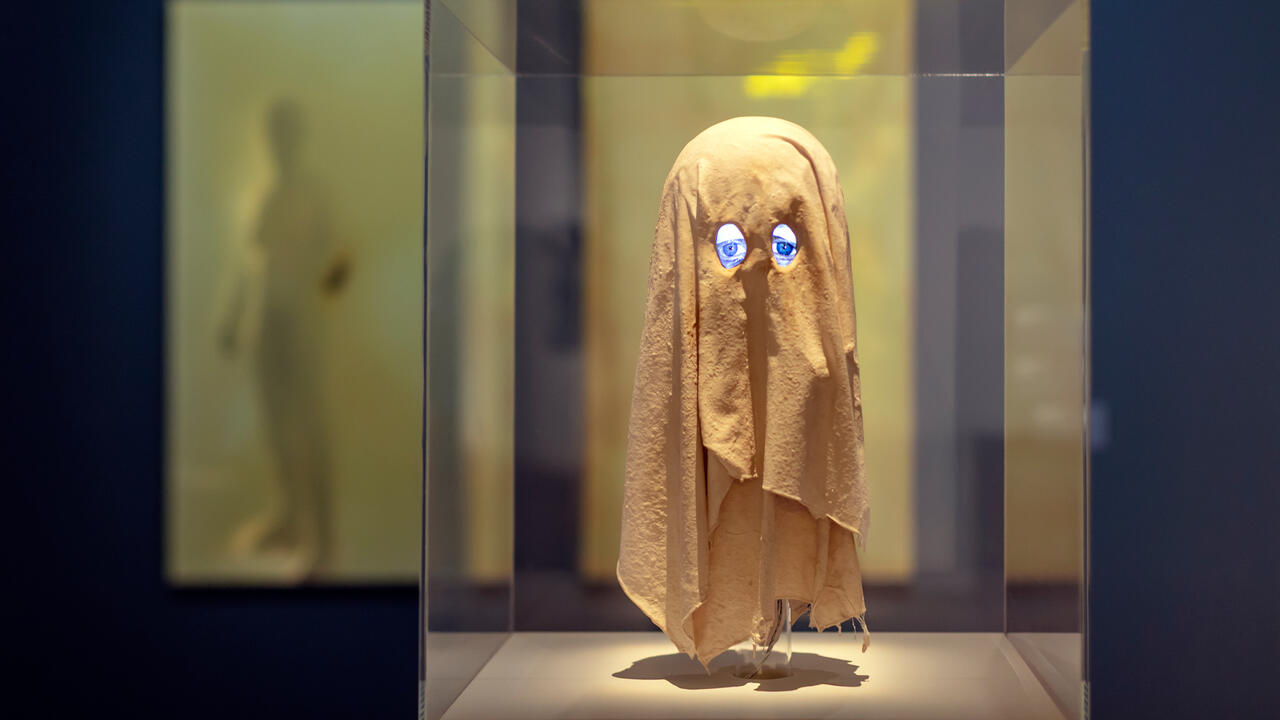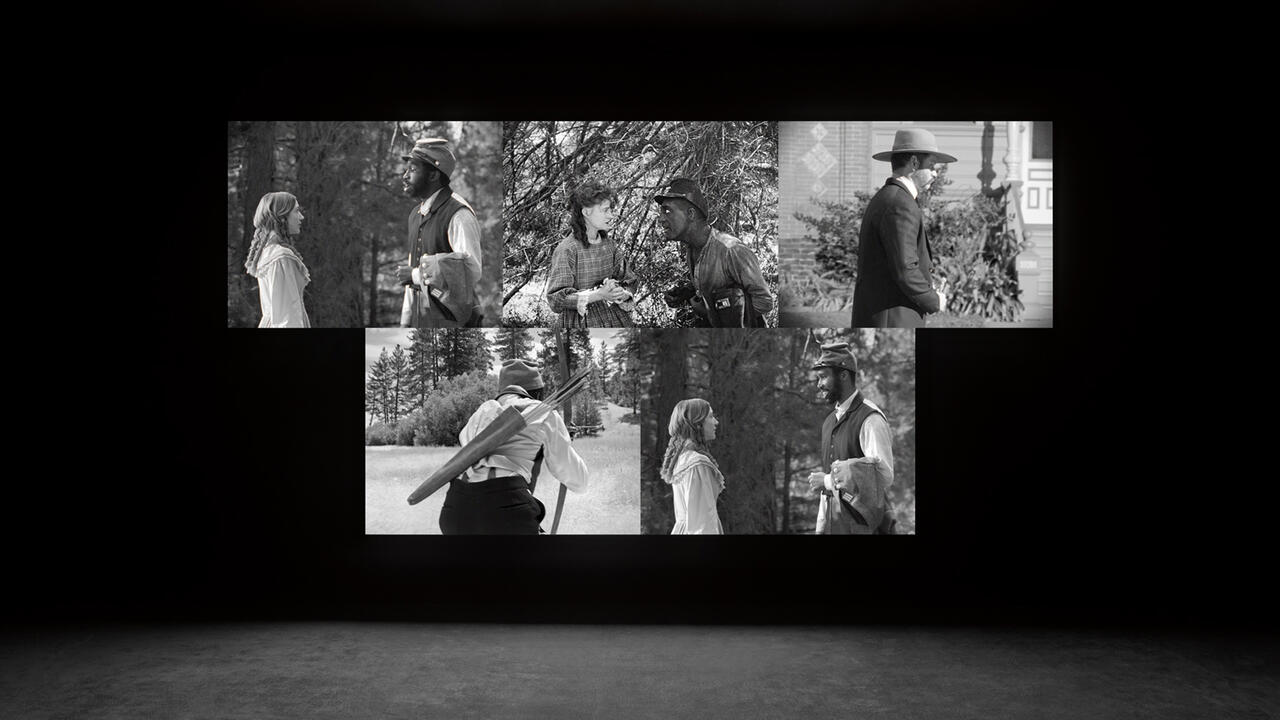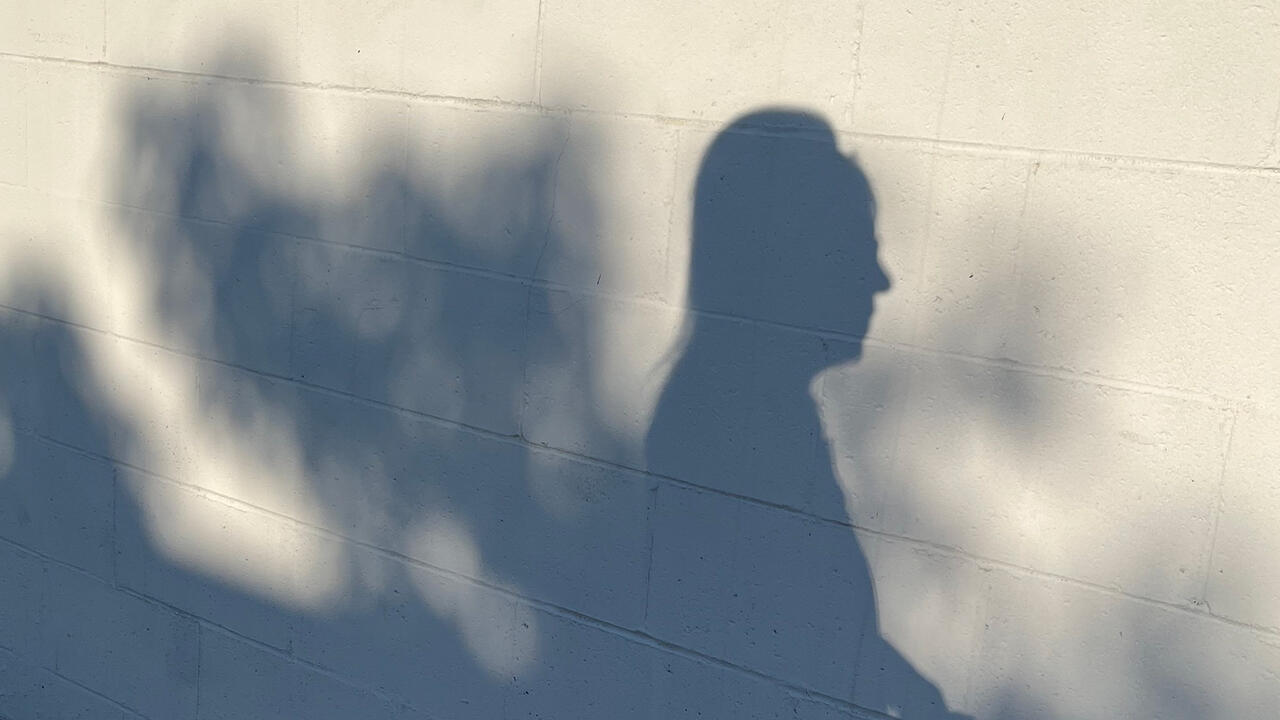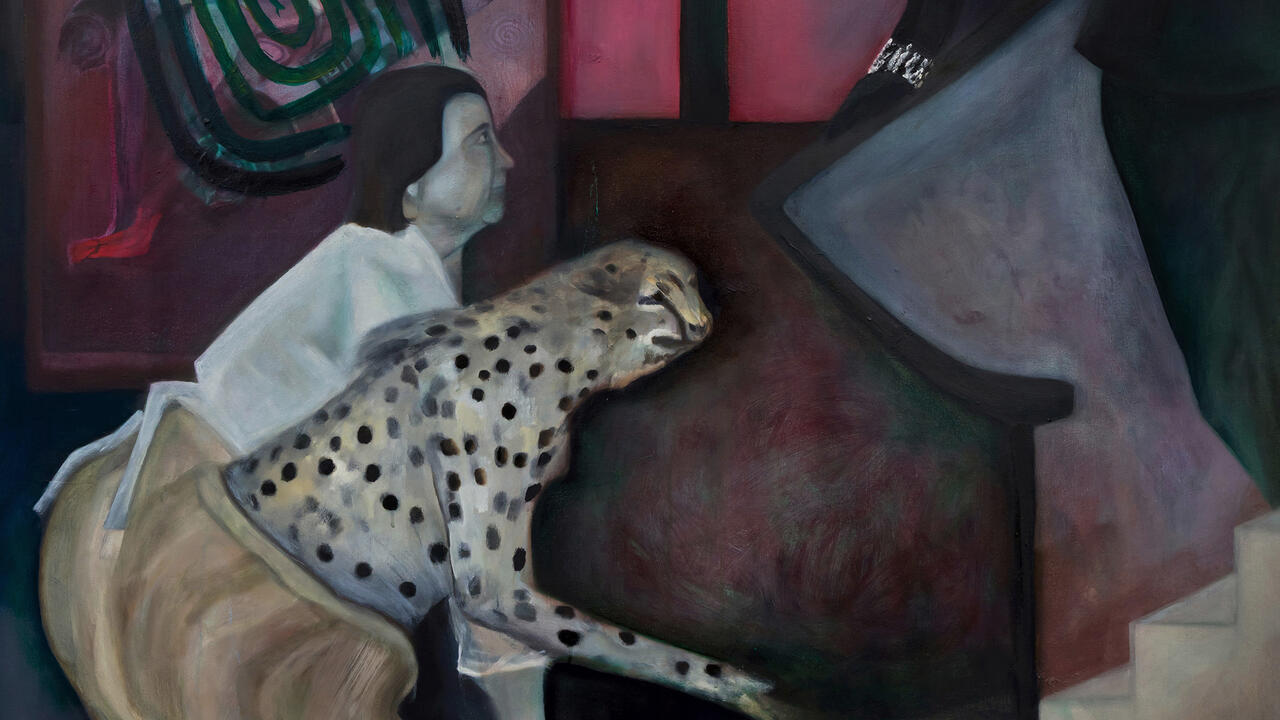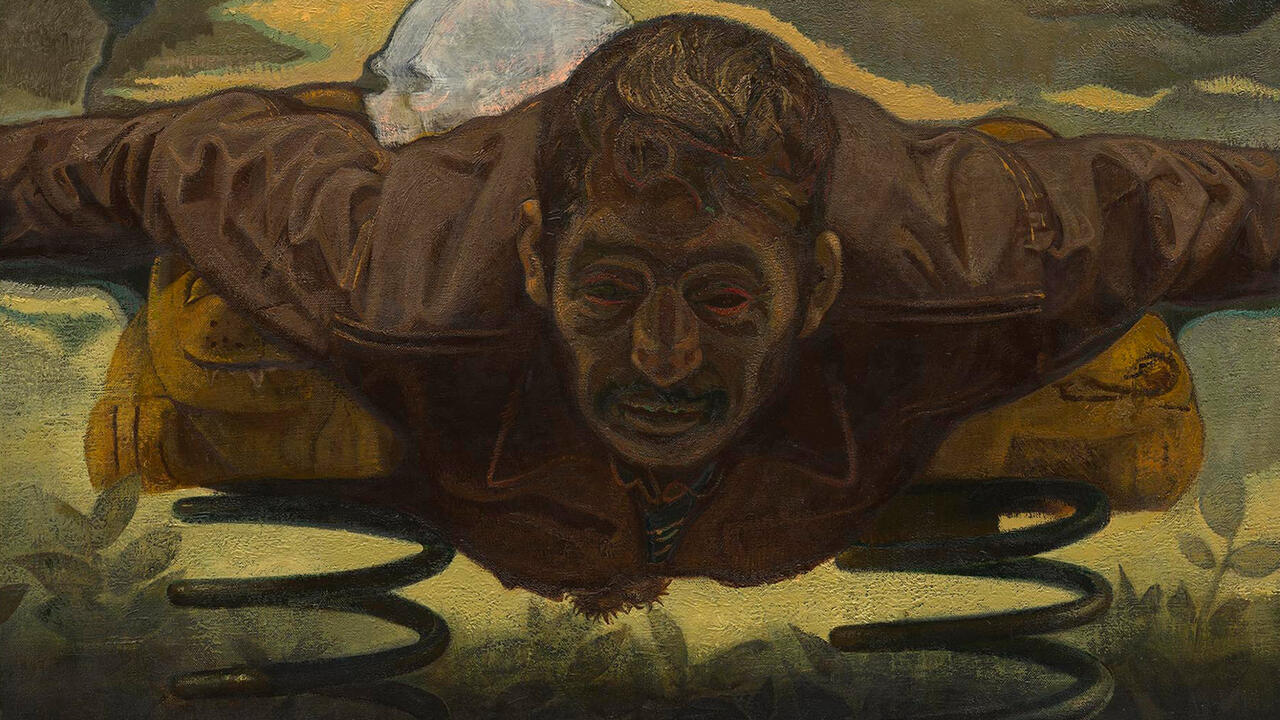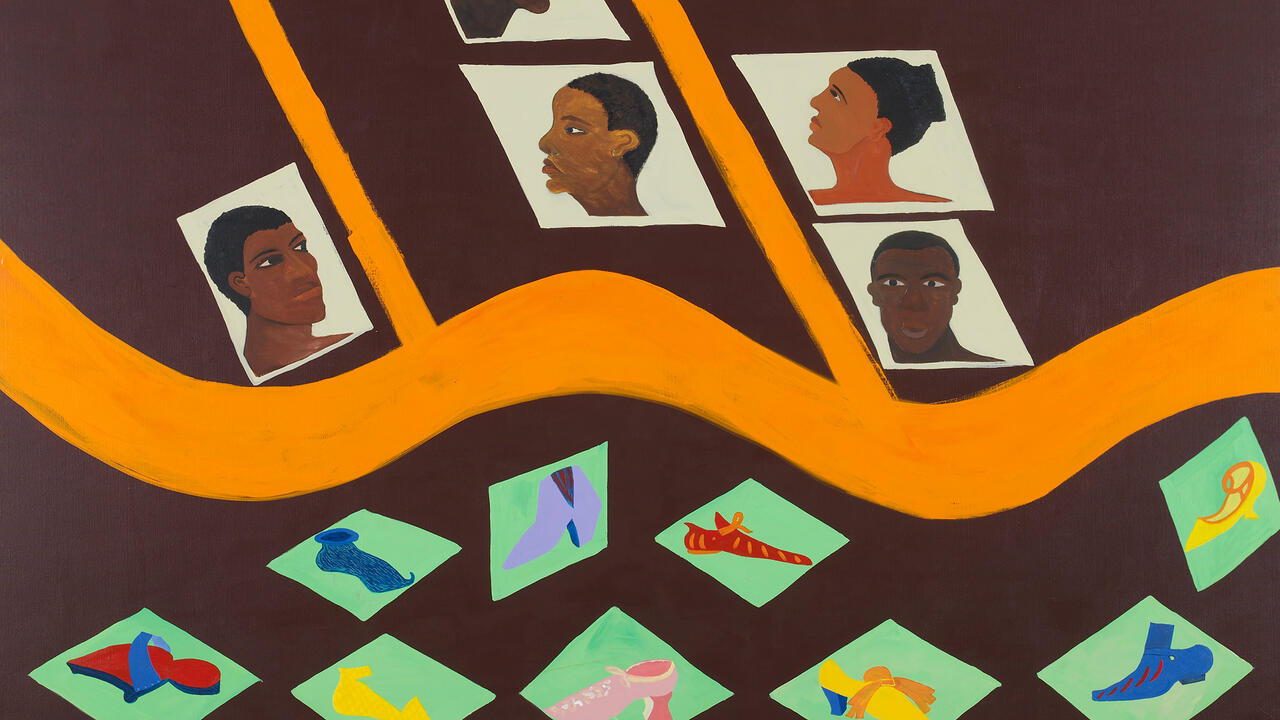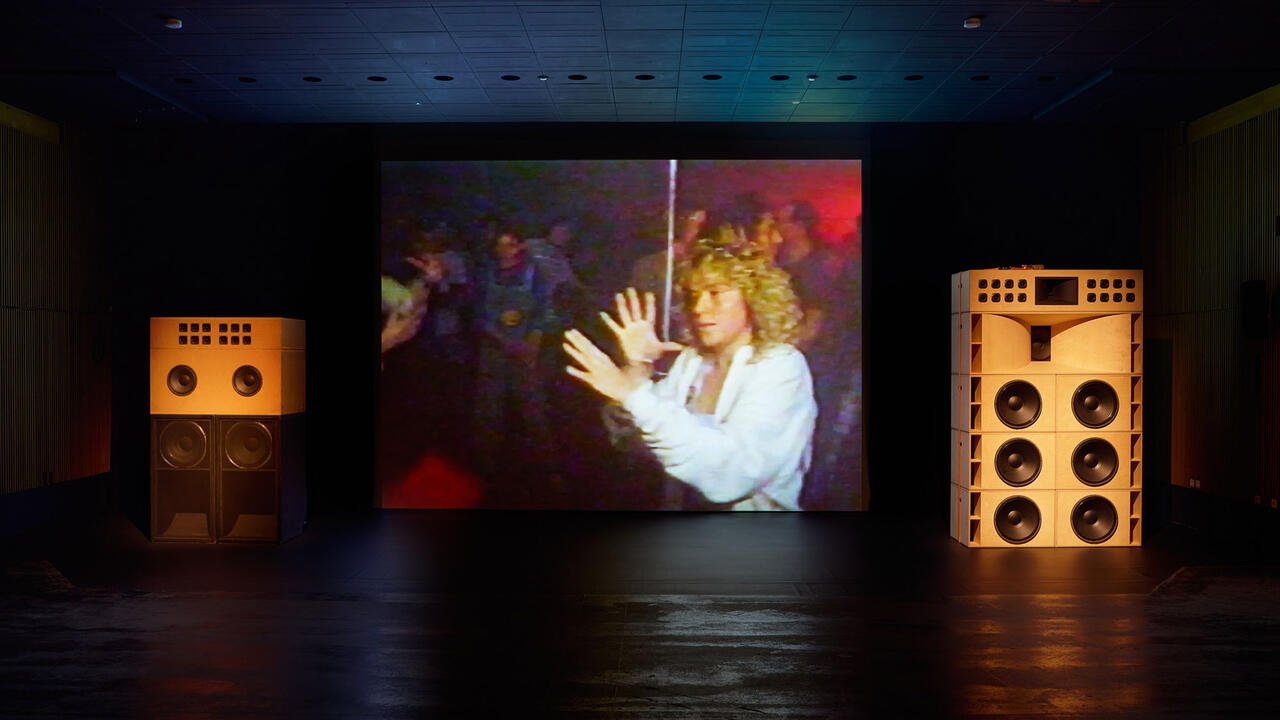Mark Leckey
Cabinet, London, UK
Cabinet, London, UK

I type quickly, but attempting to take notes whilst watching Mark Leckey’s most recent film, Dream English Kid 1964–1999 AD (2015), the sole component of the artist’s latest solo exhibition at Cabinet, was a mistake. As I scroll through them now, they read like the ramblings of an amateur experimental poet: ‘countdown / BREAM – English vocal – Space? Darkness Kid June ’64 – Satellite – Countdown again – LEKKY BACKWARDS Y’. Needless to say, I quickly gave up on the transcription and just watched the film.
Much like his now-fabled Fiorucci Made Me Hardcore (1999), Dream English Kid … is an eclectic work of spliced found footage with musical accompaniment, and an autobiography of sorts – a survey of the 35 years that preceded Leckey’s entry into the mainstream art world. As my field notes attest, the film abandons linear narrative in favour of haphazard jumps between seemingly unrelated content, moving, for instance, from a recording of former British Prime Minister Harold Wilson’s 1963 ‘white heat of technology’ speech to a series of CGI animations of graffiti-covered bridges. Amidst this madness, however – which is exacerbated by the recapitulation of a pulsing, bass-heavy soundtrack – several themes arise that bind the collage together and draw aspects of Leckey’s own character to the fore.
The echoing phrase ‘Time to Totality’ (totality being the point at which one celestial body completely obscures another), the reverberating countdowns and the reference to total lunar eclipse of 1964 communicate a desire to comprehend the greater universe that is specific to both a particular era and to the artist himself. (Born in June 1964, Leckey is a both a child of the Space Age and a Cancerian, referred to as ‘moonchildren’ in astrological circles.) A sample taken from Simon & Garfunkel’s ‘The Sound of Silence’, momentary bursts of The Beatles’ ‘A Hard Day’s Night’ (both 1964) and hazy footage of Joy Division’s Ian Curtis performing in Liverpool in 1979 chart the evolution of music culture as well as reminding us of the artist’s Liverpudlian heritage. And imagery of nuclear bomb tests, defunct, cartoonish radar animations of Cold War attacks and radio coverage from 1983 reporting the downing of Korean Airlines Flight 007 by the Soviet Union communicate a fear of war that feels all too familiar.

While these snippets relate to specific events – or, we might imagine, Leckey’s particular memories – most of the film is more difficult to pin down. Images co-exist as disparate fragments: a woman in fishnet tights combs her hair in a 1970s living room, a cockney voice shouts ‘Fucking hell!’, a candle burns out against a jet-black backdrop. Rather than attending to a single scene, time or figure, this work, in its rapid fluctuations between minutiae, communicates a shared experience and mindset. It visualizes the energy of a social environment in which more than one thing is always occurring and more than one person is always at the centre of the story. (The work’s title does not address Leckey directly, but rather the indeterminate ‘kid’: him, her, them, you, me.) As a consequence, while undeniably self-referential – at one point you hear a voice calling ‘Mark’; at another, you catch a glimpse of the artist’s reflection in a mirror – the filmis far bigger than Leckey, far more than just a self-portrait. The artist has referred to Dream English Kid … as a form of archaeology and, while this metaphor perhaps over-emphasizes the nostalgic aspect of the work, it highlights the way in which the film seems to construct the artist’s own narrative from relics that belong to a shared culture, digging them out from the wider substrata of 1960s–’90s Britain.
Dream English Kid … implies that, when interacting with the present, we rarely, if ever, see the complete picture, especially when that picture is continually being drawn around us – I doubt the young Leckey would have understood the cultural significance of either The Beatles in 1964 or Joy Division in 1979. But, if we retroactively filter through the bulk of the photographs and the newsreels and the pop songs, and locate the occasional doodles that mean something to us, we have a slightly better chance of understanding what stands before us now: if we work through ‘LEKKY’ backwards, we might eventually comprehend the ‘Y’.












